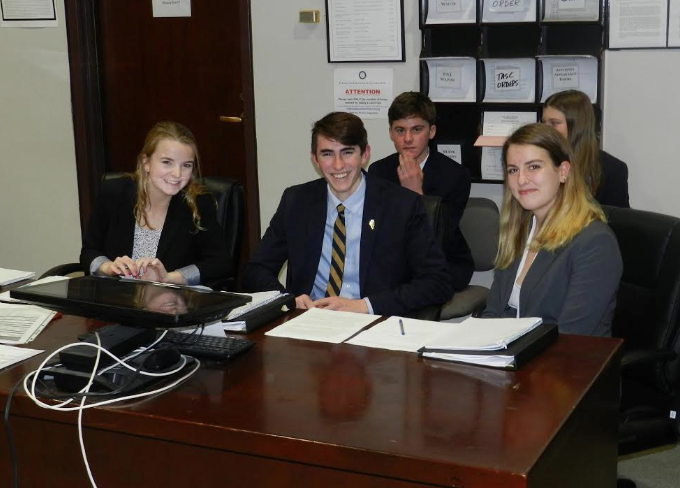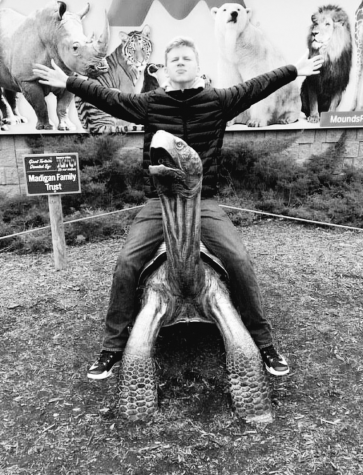Mock Madness
Mock trial wraps up season with intensity
March 17, 2017
While many of us are concerned about our March Madness bracket, students in mock trial had a different competition to worry about.
The team already went to state last weekend and placed in the top eight for the sixth consecutive year, so their great season has come to an end. However, there’s much more that goes on in mock trial than its white-collar name name might suggest. The competition is fierce, and the stakes are high.
“Overall, I thought this season went really well for us,” mock trial member and sophomore Abby Osterlund says. “We lost many seniors from last year, but this year new members were able to step up, which was really important for us.”
The teams at state ranged from anywhere from highly experienced previous winners to newly created teams, but that doesn’t mean the competition wasn’t any less intense.
“There are teams that are really experienced that have won the state championship multiple years,” mock trial sponsor Kevin Kappock says. “Some teams are from smaller schools or just don’t have a lot of experience, but the competition is always really high.”
This year’s case was Taylor Cartwright versus the state of Illinois, made up for mock trial usage.Cartwright was the head of a fraternity, and one of his pledgers died while being hazed. He was charged with involuntary manslaughter and hazing.
“It’s a great case, actually, there’s a double homicide so you know you’re starting off with something interesting,” Kappock says. “There are two criminal accounts against a 21 year old, hazing and involuntary manslaughter, and one of the key witnesses died in a mysterious car crash weeks before the trial, so it’s very interesting and cool.”
Everyone in Illinois gets the same case, and they use the same case throughout the entire mock trial season. The rules are simple: every team has two trials. For one trial, they play the prosecution, and for the other trial, they play the defense.
Each team gets two witnesses during a trial to help win the case, and these witnesses are members of the team. The parts of a trial include direct examinations, cross examinations, and witness testimonies. All of this is fast paced, on the fly, and there are no breaks in the action. Many teams use specific strategies to communicate and help break down their opponents.
“We really like to use our own opponents statements against them, so that means listening,” Kappock explains. “We need to figure out what they’re saying and twist it to our advantage in whatever way that we can.”
When scoring mock trial matchups, there are three jurors, these jurors are the “lawyers” of the trial. Each part of the trial is given a score out of five points by the jurors. In the end, the points are tallied up, and the team with the most points wins. It’s chaotic, it’s crazy, it’s the madness of March.
“Teamwork is really important, and we take our competitions as team competitions,” Kappock says. “We help each other out. We have to adapt, it’s not a play, you don’t prewrite the whole thing. You can plan on things, but you have to adapt.”
Mock trial is a realistic, intense, on the edge of your seat experience where students can learn about law and practice courtroom procedures. It gives students a look into potential career choices, and provides many fun and complex opportunities along the way.









